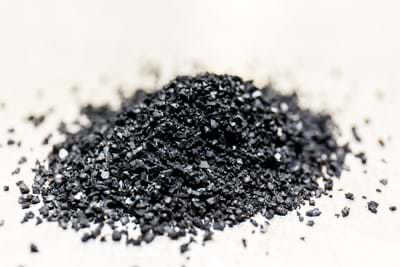Recycled crumb rubber
When tyres from trucks, cars, and the agricultural and mining industries reach their end-of-life, they are often discarded or exported.
By cutting, shredding, and crumbing these tyres into crumb rubber (CR), this valuable material can be recycled back into infrastructure.
How is it processed?
In Australia, several facilities process end-of-life tyres. The processing requirements vary depending on the type of tyre. Generally, the process involves removing fabric and steel, cutting the tyre into smaller pieces, and then shredding or crumbing it to the desired size.
Truck tyres are most commonly processed into CR, followed by car tyres. However, there are fewer facilities equipped to handle larger tyres, such as mining tyres or conveyor belts. The industry is gradually adapting to meet this need.
Tyre Stewardship Australia maintains an accreditation scheme for tyre processors, promoting safe and environmentally conscious practices.
Environmental, health, and safety
While applications that necessitate heating the CR, such as incorporation into hot mix asphalt, can produce a noticeable smell, research has shown that the fuming and emissions risk is comparable to standard asphalt construction practices and within Safe Work limits.
Additionally, current available research shows that the risk of leaching into the environment is negligible. Applications where the CR is bound within the product, i.e. not loosely applied, are recommended.
Applications
CR can potentially be used in a number of infrastructure applications. These include:
- asphalt
- sprayed seal
- ancillary infrastructure and urban design; for example, as bollards or wheel stops
Specifications
Main Roads Western Australia (MRWA) currently has specifications for the use of CR in a number of products, specifying a minimum 18% by weight of the binder, such as:
- Specification 516 for Crumb Rubber Open Graded Asphalt
- Specification 517 for Crumb Rubber Gap Graded Asphalt
The Public Transport Authority outlines its requirements for pavements, including CR modified dense graded pavements for local access roads and carparks, in:
- 8880-450-067: Specification - Roads, Busways and Paths
- 8880-400-003: Specification - Bituminous Surfacing in the Rail Reserve
Benefits and challenges
CR has been used in pavement applications for decades in Australia, because of its performance enhancing properties. When used in asphalt or spray sealing, it can reduce risk of fatigue cracking and prolong the pavement life.
Challenges may include adapting plant and equipment to be able to produce CR mixes, or the equipment requirements to process different types of tyres and rubber sources.
Previous use in Western Australia
CR modified asphalt has been used in Western Australia since the early 2010’s. It is now business as usual practice for all open graded asphalt in MRWA’s Perth region to contain CR.
Additionally, a number of local governments use CR modified asphalt across Western Australia.

References
- Hall, B, Grenfell, J, Pandelidi, C, Yaghoubi, J, Chaudry, U, Lyons, M, O'Connor, G, Harrison, J & Feigen, D 2022, Best practice expert advice on the use of recycled materials in road and rail infrastructure: part A technical review and assessment.
- Main Roads Western Australia (MRWA) 2024, Crumb rubber open graded asphalt, Specification 516, WA.
- Main Roads Western Australia (MRWA) 2024, Crumb rubber gap graded asphalt, Specification 517, WA.